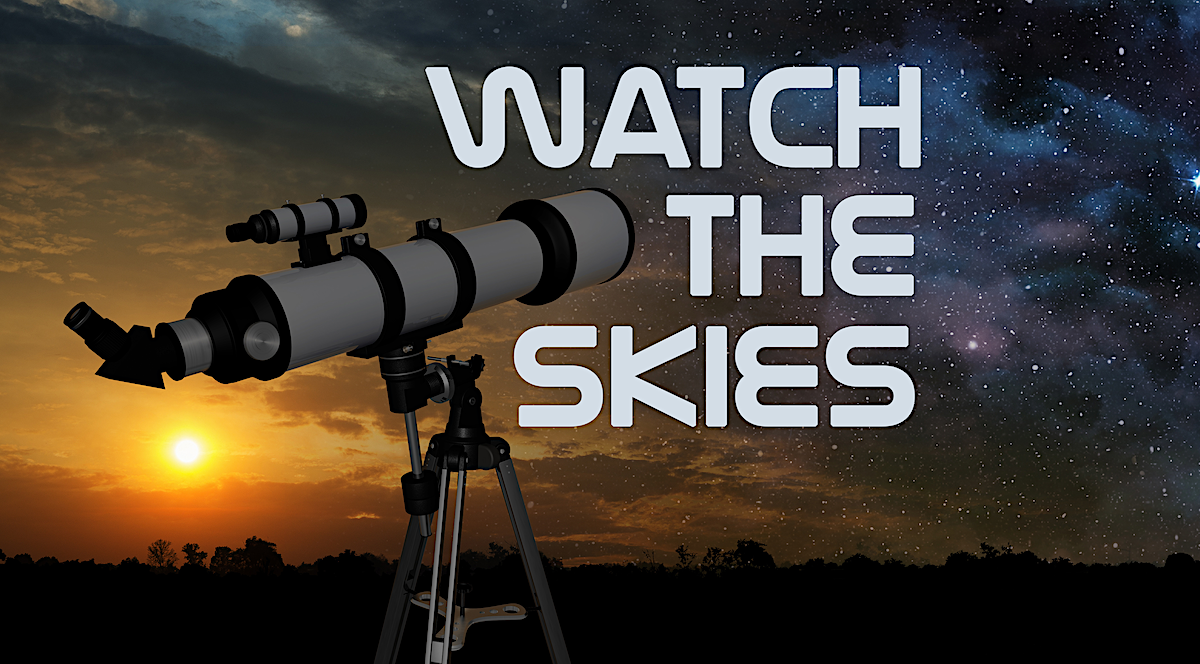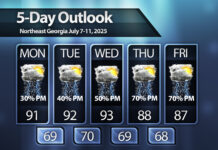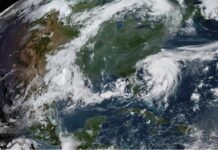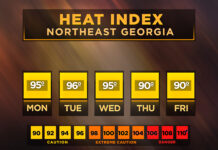
After a VERY cloudy week overall we will hopefully be seeing some slightly better stargazing conditions this week. This will make for a perfect opportunity to cover the last bright planet not covered so far in this series: Jupiter.
Jupiter is 5th planet from the sun and by far the largest planet in the solar system. If you combined the mass of all the other planets Jupiter would still be twice as heavy. It’s width is 11 times that of the Earth’s. It rotates very quickly making a full spin on it’s axis every 10 hours, though it takes 11.8 years to make one full revolution around the sun. It is a gas giant which means it has a very small, if any, solid core making it’s interior workings difficult to study.

It’s Atmosphere: When viewed through a telescope, Jupiter appears as a beautiful red/orange tinted sphere. It’s upper atmosphere is dotted with storms and has several main belts. With a decent size pair of binoculars you can easily make out the two red equatorial belts against the whiter background. These are most easily viewed when it isn’t quite dark yet when you can get a greater contrast between them. The planet is largely comprised of atmosphere so the term is a bit cloudy, but it’s composition is about 75% hydrogen and 24% helium. Near the center these numbers drop slightly to 71% hydrogen but still 24% helium. Interestingly this is similar to the composition of an early star before it begins fusion. Jupiter is, in a sense, a “failed” star although it would have needed to be significantly more massive (about 75 times) to become a star. Arthur C Clark covers this idea in his book 2010: Odyssey Two when an alien race adds mass to Jupiter until it begins fusion and becomes the second star in the solar system.
The most famous storm on Jupiter can also be easily spotted through a telescope: the Great Red Spot. This storm has been raging on Jupiter for at least 200 years, if not longer, and is gigantic. It is over twice as wide as Earth and contains extremely strong winds. It was once though to be a stable feature that would persist for perhaps hundreds more years but since it’s official discovery in the 1800s it has decreased in size significantly. Over the past decade there have been a handful of events when parts of the storm “broke off” leaving behind a slightly smaller storm. Despite being photographed and viewed for so long not much is known about this, or any other, storm. Even the reasoning behind it’s red color is up for debate, but a chemical reaction is the best bet.

The Moons: My personal favorite thing about Jupiter is it’s moon system. The planet has at minimum 80 moons, with 4 easily visible with a pair of strong binoculars or a small telescope. These four are known as the “Galilean” moons because they were discovered by Galileo with his early telescopes. They are named Io, Europa, Ganymede and Callisto. I will cover these more in depth in a future article but each of these is unique in it’s own right and absolutely fascinating. With a large enough telescope you can actually see shadows cast on Jupiter’s surface by these moons. I saw it a handful of times through the University of North Georgia’s during my tenure there as a telescope operator, and in my opinion it is the coolest thing you can see in our solar system.
Fun Facts:
-A relatively little known fact about Jupiter is that it has a very faint ring system. This ring system isn’t visible from Earth and wasn’t detected until Voyager visited the system in 1979. The system is composed of 3 main bands. Jupiter’s mass being so much larger than Saturn’s may explain the lack of rings as most small rocks will eventually get pulled into the planet.
-Jupiter has the strongest magnetic field of any planet. This has been a problem for spacecraft that get close to the planet as the strong magnetic field can damage the electronics.
-Jupiter is large enough to affect other planets orbits. In fact, most of the planets orbits have been affected by Jupiter during the solar system’s early days. Many comets have had their orbits changed by Jupiter and impacts have been observed. The most famous of these was in 1994 when Comet Shoemaker Levy collided with Jupiter. The images below show the impact fireball (it occurred on the dark side of Jupiter) and the dark spots later on.


Exploration: Jupiter was first visited by the Pioneer spacecraft in the early 70’s and later both Voyager spacecraft. The first probe specifically aimed to study Jupiter was the Galileo mission which studied the planet from 1995 to 2003. This mission carried the first detachable sensor to plummet into the planet’s thick atmosphere. It also studied up close all 4 Galilean moons before being deorbited and allowed to burn up in the atmosphere in 2003. The longest mission to Jupiter to date is the Juno mission which arrived at the planet in 2016 and is still operational.
You can catch Jupiter in the evening sky right now high in the south. It is the 2nd brightest star only behind Venus so you can’t miss it. So take advantage of the clear skies this week and catch our large gas giant friend!






